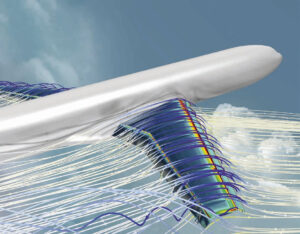The challenge of engineering
Your business is facing tough competition from all quarters. You need to consider conflicting challenges, such as improving the quality and increasing the range of your products while simultaneously reducing both their cost and time to market. Your customers are demanding smart products that are not only customized to meet their current needs, but will continue to evolve as they use them. The government and other regulatory bodies are passing increasingly stringent legislation that requires your products to be more energy efficient, more environmentally friendly and safer than ever before. This highly competitive landscape is driving a golden age of innovation in which your products either evolve rapidly to meet the demands of the market, or are replaced by smarter, better, cheaper alternatives from your competitors. The choice is simple, either innovate or stagnate. As you innovate new, improved products, your design evolves through a large number of incremental changes. You need to be able to predict how these intended improvements influence real world performance, for better or for worse. This is the challenge of engineers today: to efficiently navigate that infinite tree of potential design changes, making those choices that improve the product and rejecting the far more numerous wrong choices that would make it worse.
Simulation is the solution
Engineering simulation allows engineers to see into the future, predicting the consequence of any design change on the real world performance of their products. Deployed effectively, it can be used to improve your design through multiple iterations, providing data to guide the design process from its earliest stages, through to production and beyond. Engineering simulation offers comprehensive predictions that are more accurate and less expensive than experimental testing. Beyond that, simulation gives engineers the opportunity to glimpse at all possible futures, by exploring the performance of a product over the full range of operating conditions that it is likely to face in its working life, rather than just at a handful of carefully chosen design points. By considering the complete performance of a product, rather than only a handful of worst-case scenarios, engineers can almost always uncover and eliminate multiple inefficiencies. Ultimately, all this results in the delivery of higher quality and more innovative products that better fulfill your customer expectations. However, not all engineering simulation tools are created equally. In this document, we explore the essential requirements that such a tool must fulfill to add value to the industrial design process.
“We have very complex physics. The structural and fluid dynamics aspect of the cooling of molten glass cannot be separated because they are very, very, coupled. Understanding the actual temperature of the glass is by far the most important factor in
ensuring the strength and quality of the final container. Multiphysics simulation using a too like STAR-CCM+ is the only way that we can
achieve that.”
Realism through multiphysics

Solving complex industrial problems requires simulation tools that span a variety of physical phenomena and engineering disciplines. Real-world problems do not separate themselves into convenient categories such as “aerodynamics,” “hydrodynamics,” “heat transfer” or “solid mechanics.” Failing to account for important physical interactions leads to uncertainty, for which the usual remedy is over-engineering to ensure additional factors of safety.
Only multiphysics engineering simulation can accurately capture all of the relevant physics that influence the performance of your product. By minimizing the level of approximation and the number of assumptions, you can be confident that the predicted behavior of your design will match its real-world performance.

